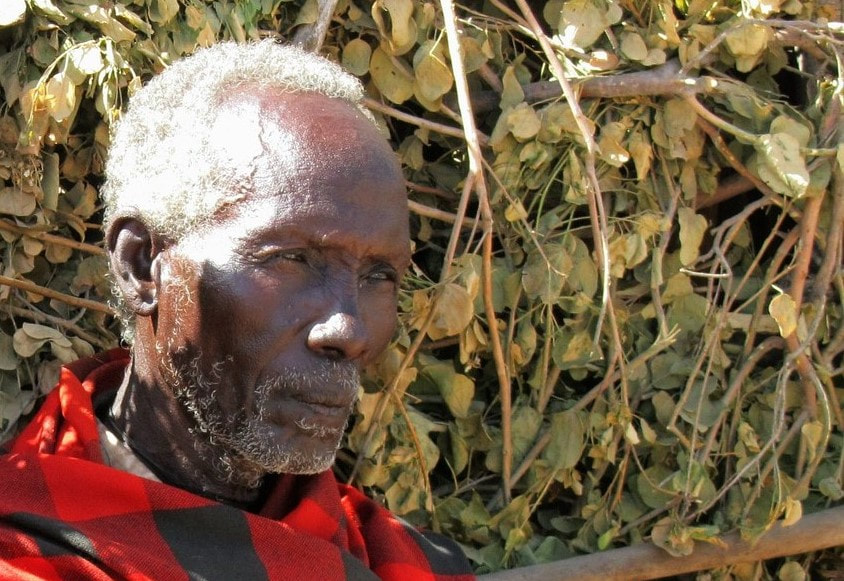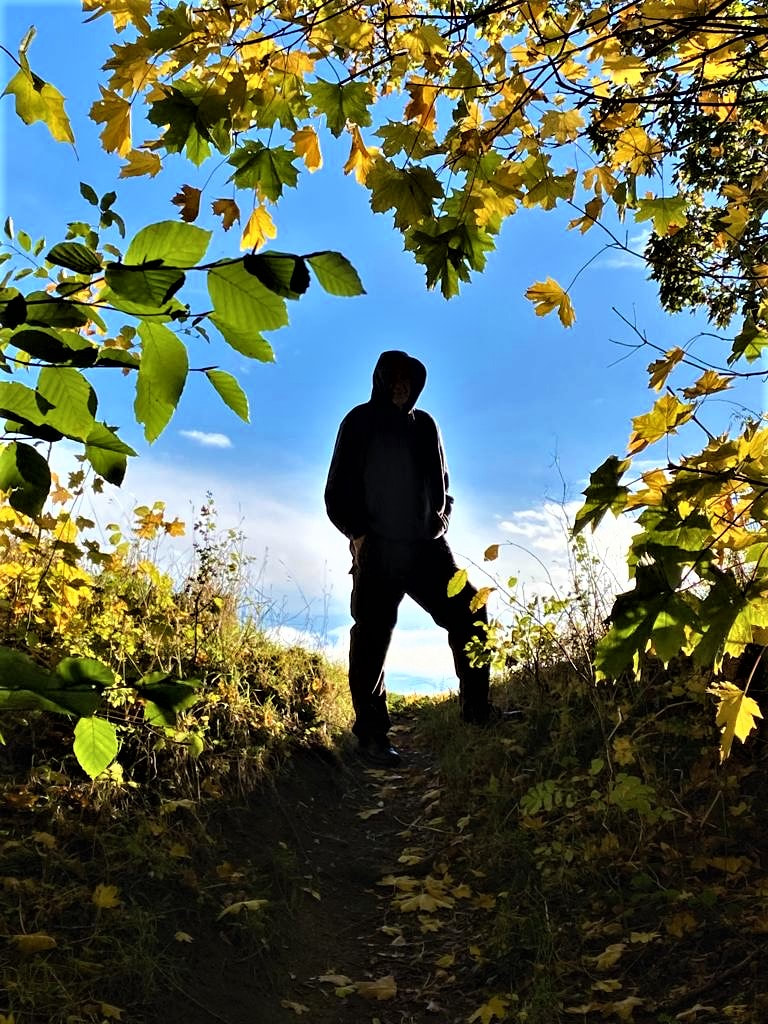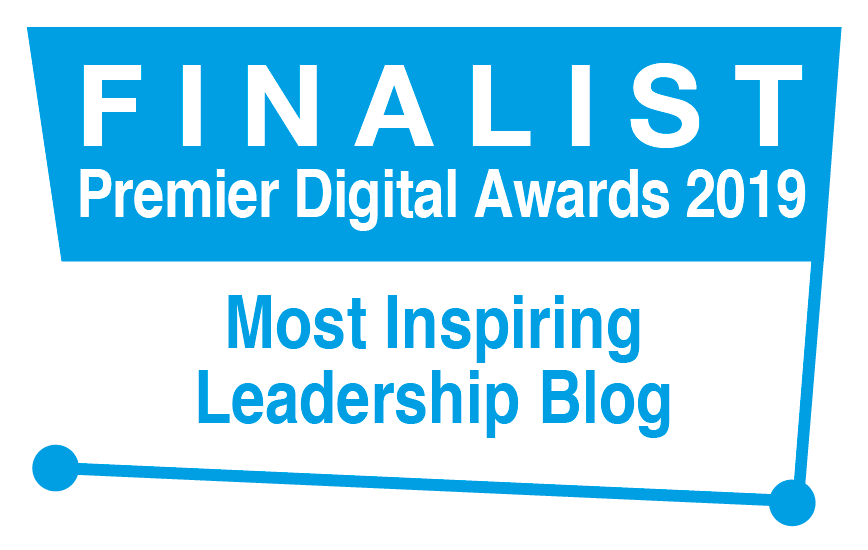|
'There is a universal human tendency to conceive of all things as like ourselves.' (David Hume) In the ground-breaking, futuristic film ‘Her’ (2014), actor Joaquin Phoenix played the part of a man who falls in love with an artificially intelligent (AI) virtual assistant. The AI, whose voice was played by actress Scarlett Johansson, was capable of deep learning. It, or we could say ‘she’, spoke, responded and interacted with the protagonist in ways that we could imagine of a real woman in an increasingly loving relationship – and all via a voice. The movie played with the social-psychological possibilities and limits of the potential inter-relationship between humans and technology. In the next year another movie, ‘Ex Machina’ (2015), saw Domhnall Gleeson playing the role of a computer programmer who encounters an AI robot, this time in the physical form of a beautiful woman played by Alicia Vikander. Gleeson is invited by a tech entrepreneur to test (a) whether she’s capable of genuine consciousness and (b) whether he can relate to her as ‘human’, even though he knows she is artificial. As the plot plays out, the AI skilfully seduces and manipulates the programmer, with apocalyptic implications as the AI plays out the relational game and wins. One of the striking features of both dramas is the human ability to project our human qualities onto other people or things, in this case the AIs, in ways similar to those in which we may, say, attribute human qualities to a dog – and then relate to it as if it were in some way human. It’s a subconscious phenomenon, a blurring of the boundaries between reality and fantasy. We can know something to be true at a rational-cognitive level and, yet, still feel and behave as if a different reality were true. It’s like believing what we want to believe, when it fulfils a human need to do so.
22 Comments
‘When the winds of change blow hard enough, the most trivial of things can turn into deadly projectiles.’ (Despair.com) You’ve probably heard of change management. You’ve probably heard of change management teams too. You’ve probably heard of change plans, like project plans, sometimes expressed in Gannt charts with rows of scheduled tasks, mapped against proposed timeframes. You’re less likely, I would guess, to have heard of a transition plan. A transition plan deals with the human dimensions of change, the underlying psychological, emotional and relational issues that often prove critical to its success. Whilst change can often be planned and prepared for by agreeing desired outcomes, then working backwards to identify the practical steps needed to achieve them (a bit like working out the mechanical structure of a car engine in order to build one), transitions don’t work like that. A change process may be complex, in that there may be many interlinked moving parts, yet is in principle manageable. A transition process is dynamically-complex and, therefore, inherently unpredictable. This means that transitions can only be handled effectively by ongoing conversations with affected people. It calls for open and honest dialogue. It calls us to be invitational, curious and co-creative. It involves listening, hearing, being responsive and building trust. ‘If we were to do X…what would it mean for you?’ ‘Given what it would mean for you, what would you need?’ Well-led transitions will influence mood, climate, energy, engagement and agency: critical success factors in any change. I spent last week in Ethiopia, facilitating a vision-casting, relationship-building and insights-sharing event for an inspiring group of committed human rights activists from countries and contexts as diverse as: Australia, Bangladesh, Belgium, Brazil, Canada, China, Denmark, Egypt, Ethiopia, France, Germany, Hong Kong, India, Indonesia, Iran, Italy, Kenya, Myanmar, Nepal, Netherlands, Nigeria, Norway, Pakistan, Philippines, Poland, Russia, South Africa, Sri Lanka, Sweden, United Kingdom and United States. Listening to their accounts of lived experience, alongside the oft-harrowing accounts of other people and communities too, was a deeply-sobering and yet, at times, life-giving experience. These activists are followers of Jesus from diverse backgrounds who commit their lives and expertise to help ensure, where possible, protection and support for people and groups facing unspeakable persecution. They often take considerable personal risks in the course of their own work too. One day, I went into a local town for a short break. A very poor, elderly man walked up and called out from behind me, a stranger. He grasped my hand, looked earnestly into my eyes and said, emphatically, “Whatever you need, reach out to God. He has the power to heal you.” Then, pointing upwards, as if to God, “He will give you whatever you need.” I felt completely entranced by this man’s presence. I asked his name. “ጥላሁን (Tilahun)”, he replied. I learned later it means: ‘shadow, guide, protector...’ This felt far more profound and spiritually-significant than a chance encounter. I returned to the work in a reflective mood, reminded of the mental and emotional burnout I had faced as a young human rights activist during the brutal civil war in El Salvador. At that time, my efforts had felt painfully impotent in the face of such overwhelming suffering. This mysterious figure reminded me to look upward as well as outward, and there beyond the heartbreak to discover transcendent hope. When teams are under pressure, e.g. dealing with critical issues, sensitive topics or working to tight deadlines, tensions can emerge that lead to conversations getting stuck. Stuck-ness between two or more people most commonly occurs when at least one party’s underlying needs are not being met, or a goal that is important to them feels blocked.
The most obvious signs or stuck-ness are conversations that feel deadlocked, ping-pong back and forth without making progress or go round and round in circles. Both parties may state and restate their views or positions, wishing the other would really hear. If unresolved, responses may include anger/frustration (fight) or disengagement/withdrawal (flight). If such situations occur, a simple four step process can make a positive difference, releasing the stuck-ness to move things forward. It can feel hard to do in practice, however, if caught up in the drama and the tense feelings that ensue! I’ve found that jotting down questions as an aide memoire can help, especially if stuck-ness is a repeating pattern. 1. Observation. (‘What’s going on?’). This stage involves metaphorically (or literally) stepping back from the interaction to notice and comment non-judgementally on what’s happening. E.g. ‘We’re both stating our positions but seem a bit stuck’. ‘We seem to be talking at cross purposes.’ 2. Awareness. (‘What’s going on for me?’). This stage involves tuning into my own experience, owning and articulating it, without projecting onto the other person. E.g. ‘I feel frustrated’. ‘I’m starting to feel defensive.’ ‘I’m struggling to understand where you are coming from.’ ‘I’m feeling unheard.’ 3. Inquiry. (‘What’s going on for you?’). This stage involves inquiring of the other person in an open spirit, with a genuine, empathetic, desire to hear. E.g. ‘How are you feeling?’ ‘What are you wanting that you are not receiving?’ ‘What’s important to you in this?’ ‘What do you want me to hear?’ 4. Action. ('What will move us forward?’) This stage involves making requests or suggestions that will help move the conversation forward together. E.g. ‘This is where I would like to get to…’ ‘It would help me if you would be willing to…’. ‘What do you need from me?’ ‘How about if we try…’ Shifting the focus of a conversation from content to dynamics in this way can create opportunity to surface different felt priorities, perspectives or experiences that otherwise remain hidden. It can allow a breathing space, an opportunity to re-establish contact with each other. It can build understanding, develop trust and accelerate the process of achieving results. How would you describe your coaching style? What questions would you bring to a client situation?
In my experience, it depends on a whole range of factors including the client, the relationship, the situation and what beliefs and expertise I, as coach, may hold. It also depends on what frame of reference or approach I and the client believe could be most beneficial. Some coaches are committed to a specific theory, philosophy or approach. Others are more fluid or eclectic. Take, for instance, a leader in a Christian organisation struggling with issues in her team. The coach could help the leader explore and address the situation drawing on any number of perspectives or methods. Although not mutually exclusive, each has its own focus and emphasis. The content and boundaries will reflect what the client and coach believe may be significant: Appreciative/solutions-focused: e.g. ‘What would an ideal team look and feel like for you?’, ‘When has this team been at its best?’, ‘What made the greatest positive difference at the time?’, ‘What opportunity does this situation represent?’, ‘On a scale of 1-10, how well is this team meeting your and other team members’ expectations?’, ‘What would it take to move it up a notch?’ Psychodynamic/cognitive-behavioural: e.g. ‘What picture comes to mind when you imagine the team?’, ‘What might a detached observer notice about the team?’, ‘How does this struggle feel for you?’, ‘When have you felt like that in the past?’, ‘What do you do when you feel that way?’, ‘What could your own behaviour be evoking in the team?’, ‘What could you do differently?’ Gestalt/systemic: e.g. ‘What is holding your attention in this situation?’ ‘What are you not noticing?’, ‘What are you inferring from people’s behaviour in the team?’, ‘What underlying needs are team members trying to fulfil by behaving this way?’, ‘What is this team situation telling you about wider issues in the organization?’, ‘What resources could you draw on to support you?’ Spiritual/existential: e.g. ‘How is this situation affecting your sense of calling as a leader?’, ‘What has God taught you in the past that could help you deal with this situation?’, ‘What resonances do you see between your leadership struggle and that experienced by people in the Bible?’, ‘What ways of dealing with this would feel most congruent with your beliefs and values?’ An important principle I’ve learned is to explore options and to contract with the client. ‘These are some of the ways in which we could approach this issue. What might work best for you?’ This enables the client to retain appropriate choice and control whilst, at the same time, introduces possibilities, opportunities and potential new experiences that could prove transformational. What are your favourite coaching questions? I often use 3 that I’ve found can create a remarkable shift in awareness, insight and practice, especially in team coaching. I’ve applied them using variations in language and adapted them to different client issues, opportunities and challenges. They draw on principles from psychodynamic, Gestalt and solutions-focused coaching and are particularly helpful when a client or team feels stuck, unable to find a way forward.
* ‘What’s your contribution to what you are experiencing?’ * ‘What do you need, to contribute your best?’ * ‘What would it take..?’ Client: ‘These meetings feel so boring! I always leave feeling drained rather than energised.’ Coach: ‘What’s your contribution to what you are experiencing?’ Client: ‘Excuse me?’ Coach: ‘What do you do when you feel bored?’ Client: ‘I drift away, look out of the window.’ Coach: ‘What might be the impact on the wider group when you drift away?’ Client: ‘I guess others may disengage too.’ Coach: ‘How does the meeting feel when people disengage?’ Client: 'Hmmm…boring!’ Coach: ‘What do you need to contribute your best?’ Client: ‘It would help certainly if we could negotiate and agree the agenda beforehand, rather than focus on things that feel irrelevant.’ Coach: ‘So you want to ensure the agenda feels relevant to you. What else?’ Client: ‘If we could meet off site and break for coffee from time to time, that would feel more energising.’ Coach: ‘So venue and breaks make a difference too. Anything else?’ Client: ‘No, that’s it.’ Client: ‘I don’t think I can influence where and how these meetings are held.’ Coach: ‘It sounds like you feel quite powerless. How would you rate your level of influence on a scale of 1-10?’ Client: ‘Around 3’. Coach: ‘What would it take to move it up to a 6 or 7?’ Client: ‘I guess if I showed more support in the meetings, the leader may be more open to my suggestions.’ Coach: ‘What else would it take?’ Client: ‘I could work on building my relationship with the leader outside of meetings too.’ These type of questions can help a client grow in awareness of the interplay between intrapersonal, interpersonal and group dynamics, his or her impact within a wider system, what he or she needs to perform well and how to influence the system itself. They can also shift a person or team from mental, emotional and physical passivity to active, optimistic engagement. What are your favourite coaching questions? How have you used them and what happened as a result? It was an energising experience, facilitating a group of leaders this week who are keen to build a new high performing team. We pushed the boundaries of normal ways of working to stimulate innovative ideas in all aspects of the team’s work. We used photos to create an agenda and physically enacted people’s aspirations to avoid falling into conventional patterns of heady, rational conversation. It felt very different to meeting ‘because that’s what we do’. There was a different dynamic, energy and momentum. Participants leaned actively into the conversation, not leaning back in passivity or boredom. Yet it can be a real challenge to break free from tradition, from norms that trap a team in ways of doing things that feel familiar and safe but, deep down, lack inspiration or effectiveness. In our meetings, how often do we pause before diving into the agenda to ask, ‘What’s the most important thing we should be focusing on?’, ‘How are we feeling about this?’, ‘What is distracting us or holding our attention?’, ‘What could be the most creative and inspiring way to approach this?’, ‘What do we each need, here and now, to bring our best to this?’, ‘What would be a great result?’ So I presented a simple model to the team with four words: content (what), process (how) and relationship (who) encircled around goal (where). In all my experience of working with individuals and teams, whether in coaching, training or facilitation, whether in the UK or overseas, these four factors are key recurring themes that make a very real difference. They seem to be important factors that, if we get them right, make a positive impact. They lead to people feeling energised, more alive, more motivated and engaged. Conversely, if we get them wrong, they leave people frustrated, drained of energy, bored or disengaged. Worse still, if left unaddressed, they can lead to negative, destructive conflict that completely debilitates a team. We can use a simple appreciative inquiry to reflect on this.‘Think back to your best experience of working with another person or team. How did you feel at the time?’, ‘Think back to a specific example of when you felt like that with the person or team. Where were you at the time? What were you doing? What were they doing? What made the biggest positive difference for you?’ One of the things we notice when asking such questions is that different things motivate and energise different people. That is, of course, one of the tricky parts of leading any team. So a next question to pose could be something like, ‘What would it take for this team to feel more like that, more of the time for you?’ and to see what the wider team is willing to accommodate or negotiate. Now back to the model with some sample prompts to check out and navigate with a client, group or team. Notice how the different areas overlap and impact on each other. It’s about addressing all areas, not just to one or two in isolation. However, having explored each area in whatever way or level suits your situation, you are free to focus your efforts on those that need special attention. Goal: ‘What’s your vision for this?’, ‘Why this, why now?’, ‘What are you hoping for?’, ‘What would make a great outcome for you?’, ‘What would be the benefits of achieving it or the costs of not achieving it?’, ‘Who or what else is impacted by it and how?, ‘Where would you like to get to by the end of this conversation?’, ‘An hour from now, what would have made this worthwhile?’ Content: ‘What’s the most important issue to focus this time on?’, ‘What is the best use of our time together?’, ‘What is the issue from your perspective?’, ‘How clear are you about what this issue entails?’, ‘What feelings is this issue evoking for you?’, ‘What do we need to take into account as we work on this together?’, ‘Do we have the right information and expertise to do this?’ Process: ‘How would you like to do this?’, ‘What approach would you find most inspiring?’, ‘What might be the best way to approach this given the time available?’, ‘Which aspects to we need to address first before moving onto others?’, ‘What would be best to do now and what could be best done outside of this meeting?’, ‘Could we try a new way that would lift our energy levels?’ Relationship: ‘What’s important to you in this?’, ‘What underlying values does this touch on for you?’, ‘How are you impacted?’, ‘How are you feeling?’, ‘What are you noticing from your unique perspective?’, ‘What distinctive contribution could you bring?’, ‘What is working well in the team’s relationships?’, ‘What is creating tension?’, ‘How could we resolve conflicting differences?’ The versatility of the model is that it can be reapplied to coaching, training and other contexts too. In a training environment you could consider, for instance, ‘What are we here to learn?’ (goal), ‘What material should we cover?’ (content), ‘What methods will suit different learning styles?’ (process) and ‘How can we help people work together well in this environment?' (relationship). In a coaching context it could look something like, ‘How do you hope to develop through engaging in this coaching experience?’ (goal), ‘What issues, challenges or opportunities would you like to focus on?’ (content), ‘How would you like to approach this together?’ (process) and ‘What would build and sustain trust as we work on these things together?’ (relationship). I’d be interested to hear from you. Do the areas represented in this model resonate with your own experiences? Which factors have you noticed tend to be most attended to or ignored? Do you have any real-life, practical examples of how you have addressed these factors and what happened as a result? In your experience, what other factors make the biggest difference? I took my mountain bike for repairs last week after pretty much wrecking it off road. In the same week, I was invited to lead a session on ‘use of self’ in coaching. I was struck by the contrast in what makes a cycle mechanic effective and what makes the difference in coaching. The bike technician brings knowledge and skill and mechanical tools. When I act as coach I bring knowledge and skills too - but the principal tool is my self.
Who and how I am can have a profound impact on the client. This is because the relationship between the coach and client is a dynamically complex system. My values, mood, intuition, how I behave in the moment…can all influence the relationship and the other person. It works the other way too. I meet the client as a fellow human being and we affect each other. Noticing and working with with these effects and dynamics can be revealing and developmental. One way of thinking about a coaching relationship is as a process with four phases: encounter, awareness, hypothesis and intervention. These phases aren’t completely separate in practice and don’t necessarily take place in linear order. However, it can provide a simple and useful conceptual model to work from. I’ll explain each of the four phases below, along with key questions they aim to address, and offer some sample phrases. At the encounter phase, the coach and client meet and the key question is, ‘What is the quality of contact between us?’ The coach will focus on being mentally and emotionally present to the client…really being there. He or she will pay particular attention to empathy and rapport, listening and hearing the client and, possibly, mirroring the client’s posture, gestures and language. The coach will also engage in contracting, e.g. ‘What would you like us to focus on?’, ‘What would a great outcome look and feel like for you?’, ‘How would you like us to do this?’ (If you saw the BBC Horizon documentary on placebos last week, the notion of how a coach’s behaviour can impact on the client’s development or well-being will feel familiar. In the TV programme, a doctor prescribed the same ‘medication’ to two groups of patients experiencing the same physical condition. The group he behaved towards with warmth and kindness had a higher recovery rate than the group he treated with clinical detachment). At the awareness phase, the coach pays attention to observing what he or she is experiencing whilst encountering the client. The key question is, ‘What am I noticing?’ The coach will pay special attention to e.g. what he or she sees or hears, what he or she is thinking, what pictures come to mind, what he or she is feeling. The coach may then reflect it back as a simple observation, e.g. ‘I noticed the smile on your face and how animated you looked as you described it.’ ‘As you were speaking, I had an image of carrying a heavy weight…is that how it feels for you?’ ‘I can’t feel anything...do you (or others) know how you are feeling?’ (Some schools, e.g. Gestalt or person-centred, view this type of reflecting or mirroring as one of the most important coaching interventions. It can raise awareness in the client and precipitate action or change without the coach or client needing to engage in analysis or sense-making. There are resonances in solutions-focused coaching too where practitioners comment that a person doesn’t need to understand the cause of a problem to resolve it). At the hypothesis stage, the coach seeks to understand or make sense of what is happening. The key question is, ‘What could it mean?’ The coach will reflect on his or her own experience, the client’s experience and the dynamic between them. The coach will try to discern and distinguish between his or her own ‘stuff’ and that of the client, or what may be emerging as insight into the client’s wider system (e.g. family, team or organisation). The coach may pose tentative reflections, e.g. ‘I wonder if…’, ‘This pattern could indicate…’, ‘I am feeling confused because the situation itself is confusing.’ (Some schools, e.g. psychodynamic or transactional analysis, view this type of analysis or sense-making as one of the most important coaching interventions. According to these approaches, the coach brings expert value to the relationship by offering an explanation or interpretation of what’s going on in such a way that enables the client to better understand his or he own self or situation and, thereby, ways to deal with it). At the intervention phase, the coach will decide how to act in order to help the client move forward. Although the other three phases represent interventions in their own right, this phase is about taking deliberate actions that aim to make a significant shift in e.g. the client’s insight, perspective, motivation, decisions or behaviour. The interventions could take a number of forms, e.g. silence, reflecting back, summarising, role playing or experimentation. Throughout this four-phase process, the coach may use ‘self’ in a number of different ways. In the first phase, the coach tunes empathetically into the client’s hopes and concerns, establishing relationship. In the second, the coach observes the client and notices how interacting with the client impacts on him or herself. The coach may reflect this back to the client as an intervention, or hold it as a basis for his or her own hypothesising and sense-making. In the third, the client uses learned knowledge and expertise to create understanding. In the fourth, the coach presents silence, questions or comments that precipitate movement. In schools such as Gestalt, the coach may use him or herself physically, e.g. by mirroring the client’s physical posture or movement or acting out scenarios with the client to see what emerges. In all areas of coaching practice, the self is a gift to be used well and developed continually. It’s Christmas Day and I could have better used the title Christmas mess-edge for this short piece. The story of Jesus Christ isn’t just a sweet and sentimental account of a baby boy born in Bethlehem 2000+ years ago. If it’s true, it’s about God entering the very real messiness of our lives and world and offering the potential to transform them into something completely new. Something beyond our wildest dreams, hopes or expectations. Something that stretches and transcends the boundaries of all human existence and experience.
I’ve known something about this notion of stretching boundaries over this past year, about extending the edges of my own experience. I bought a new bike in the spring, challenged myself to cycle over 1000 miles in 6 months and over 50 miles in a single ride. I had never done anything like that before and yet I did it. I also challenged myself to swim 1 mile 3 times in the same week. And I did it. It felt like I had crossed over an important physical and psychological line, achieving things that had previously felt impossible for me. I wrote and had published my first article with the British Association for Counselling and Psychology (BACP). I’d written lots of articles for different publications before but this felt like the next step up in a professional field that sits close to my heart. The editor of Coaching Today invited me to write on spirituality and I jumped at the chance. To top it off, I did my first ever series of radio interviews on spirituality too. It was a great opportunity and a novel experience so sit in a recording studio and to share my beliefs openly on air. And if that was the end of the story, there would be no need for a Jesus, at least for me. But it’s far from the end. I’ve struggled and failed on so many fronts. Sometimes, I haven’t even struggled when I have known I should. I’ve known deeply and personally what Francis Spufford aptly calls the universal ‘human propensity to f* things up’ (Unapologetic, 2013). At times, I’ve failed in relationships, made mistakes at work, fallen short of my own standards, spoken when I should have kept quiet and kept quiet when I should have spoken. What’s more, one of my closest friends has fought courageously with terminal illness. I’ve felt hopeful and helpless, trying to offer support where I could yet knowing I can’t make it OK. I’ve yearned to take the anxiety away but known that I can’t. I’ve watched Syria in the news, the damage that human beings are able to inflict on each others’ lives, on whole countries and regions. I’ve felt impotent and confused. Not all the time, but enough to know that redeeming the world is something I can take part in yet, ultimately, lies well beyond me. And so as I reflect on Christmas, I know what it is to be an aspiring yet fragile human being. I’ve felt exciting moments on the edge of success and have known what it is to screw up and need forgiveness. I have felt the amazing love of others, often undeserved yet tangible all the same. At that first nativity, I believe God himself entered the messy complexity of our lives and world with the most profound message of love and hope possible. Not just in words but in a life well-lived and a promise of presence and eternal life. Merry Christ-mas! I had precautionary tests this week for a potentially life-threatening condition. Thankfully, the results turned out to be OK but it’s experiences like this that often bring existential issues into sharp relief. Existential coaching focuses on helping a person explore his or her own sense of ‘being in the world’, that strange psychic awareness that we are in the world before what we are in the world. At times, such awareness can feel mysterious, unfathomable, disorientating and anxiety-provoking. It’s like one of those moments when, as a child, I gazed up into the night sky, saw the stars and the enormity of space, imagined space and time going on forever and felt dizzy and perplexed by it. It can also raise deep questions to the surface such as, ‘Who am I?’ and 'Why am I here?’
According to existentialist thought, our essence as a person isn’t fixed but we become who we are through the choices we make. Our choices are influenced by factors such as the assumptions, beliefs, judgements, hopes and fears etc. we hold about ourselves, the same we hold about others and how we experience and act in our relationships with others, in our everyday circumstances and in the decisions we face and make. Existentialist writers sometimes refer to this as our ‘stance in the world’, that is, how we perceive, position ourselves and act in our everyday lives. Our stance both reflects something of our sense of and our way of being in the world and shapes who we are and become in the world. I can share a personal example to illustrate this phenomenon. When my youngest daughter was 7 years old, I took her to a theme park that had a very high and steep ‘death slide’. I was surprised and impressed to see her quietly but resolutely psyche herself up to leap down its harrowing slope. When she finally did do it, I asked her how she managed to bring herself to push herself off its terrifying edge. She responded in a way that humbled and amazed me: ‘Firstly, when you told me it would be OK, I trusted you that it would be OK, even though it looked so scary. Secondly, when I write about what we did today in my diary tonight, I want to be able to write that I went on the slide even though I was afraid of it, not that I didn’t go on the slide because I was afraid of it. That’s the kind of person I want to be.’ I felt awe-struck and speechless. Curiously, we are often unaware of making choices, or deny to ourselves that we are making choices in order to avoid the responsibility that choice implies, and unaware of the underlying metaphysical world view we hold that both influences and is influenced by our choices. It’s as if we can live at a superficial level, sometimes choose to live at that level as a form of self defence or life-coping mechanism. The problem is that if we only live at that level, we may fail to be who we can become in the world; deny ourselves and others a deeper and more fulfilling life experience; struggle with contact in intimate relationships; expend our time, energy and resources on distractions that aim to suppress or avoid facing the discomfort and anxiety that existential issues can evoke. One of the goals of existential coaching is therefore to raise world view and choice into awareness in order enable clients to live more authentic lives. It’s about enabling clients to acknowledge and deal with underlying anxiety, tensions and conflicts that could be experienced symptomatically in psychological, emotional, physical or relational difficulties or in problematic patterns of behaviour. Duerzen summarises this approach in Skills in Existential Counselling and Psychotherapy (2011) as, ‘to help people to get better at facing up to difficulties with courage instead of running away from them’. It necessarily involves a willingness to explore issues beneath the surface, a willingness to face anxiety and a willingness to explore alternative ways of being and acting in the world. This reminds me of a volunteer assignment I did with a Christian social worker and psychologist in Germany not long after the Berlin wall came down and East and West were reunified. We were working in a social work project with young people, often from fairly poor and dysfunctional family backgrounds, who were being seduced by the far right to join new neo-Nazi groups. The groups provided these young people with a much-needed sense of identity, belonging and purpose in the world. As part of his practice, the social worker would touch sensitively on spiritual issues and questions where it seemed appropriate. A secular humanistic colleague challenged him vehemently on this, insisting that social workers should never stray into the spirituality arena. The social worker empathised with his colleague’s concerns about professional ethics and the risks of pressurising and indoctrinating vulnerable young people. At the same time, he believed that true spirituality speaks to life’s deepest questions, experiences and actions. The social worker responded, ‘These young people often talk in therapy about their deepest fears, about life and death, issues that are very real for them. It’s often such fears that lead them to seek a sense of identity, security and purpose in these sinister groups. We cannot afford to separate our thinking or our practice into neat, distinct, spheres of influence. The matters we and they are dealing with bring profound psychosocial, existential and spiritual issues face to face in the room.’ I agree. So what could existential coaching look like in practice? Firstly, the coach will invite the client to share their story, particularly focusing on issues that led them to work with a coach in the first place. The coach’s role at this stage is primarily to listen and, over time, to reflect back any beliefs and values that surface implicitly or explicitly in the client’s account, particularly in terms of how the client perceives themselves, others, issues and their situation. In this sense, the coach is acting as a sounding board and a mirror, enabling the client to grow in awareness of his or own world view. The coach will go on to focus on specific tensions that may emerge, e.g. between the client’s underlying beliefs and values and the stances or actions they are choosing in practice. The intention here is to surface the client’s underlying personal and cultural metaphysic rather than simply his or her way of perceiving and responding to an immediate issue. This approach is based on a belief that the client’s general world view or stance-in-the-world will influence e.g. what issues the client perceives as significant; how they perceive, experience and evaluate them; what their subjective needs and aspirations are; what approaches and actions they will consider valid or appropriate; what actions they will be prepared to commit to and sustain etc. This approach also enables the client to explore any tensions within their world view, between that world view and those of others in their situation and between their world view and their actions. The problem with the language of ‘world view’ in describing such an approach is that that it sounds too conscious, too cognitive, too coherent. The focus of existential coaching is profoundly subjective and phenomenological, that is, how the client actually experiences and responds to his or her being-in-the-world at the deepest psychological levels. In that sense, it’s as much about how a person feels, the questions they struggle with and what they sense intuitively as what they may think or believe rationally. Again, there are important links for me with a spiritual dimension. As I faced my own health-related tests this week, for instance, I experienced my faith in God as something more like a subconscious, mysterious, inner ‘knowing’ than a rational assent to a set of beliefs. As the coaching conversation progresses, the coach may help the client identify choices he or she is making (including by default), potential choices he or she could take in the future and how to integrate the client’s choices with his or her chosen being and stance in the world in order to live a more authentic and thereby less conflicted life. At one level, this enables the client to become more aware of and honest about their decisions and actions and to act with a greater sense of freedom and responsibility. At another level, it opens up more opportunities for the future than the client may have perceived previously. It can feel very liberating and energising to discover fresh ways of perceiving and acting in situations that have previously felt stuck or entrapping. Sample coaching methods could involve helping the client reframe experiences as choices or to change their language from passive to active voice. For example, ‘I have to write this report for my boss by Friday’ or ‘This report needs to be written by Friday’ sound and feel less empowering than, ‘I will choose to write this report for my boss by Friday’. It enables the client to take ownership of their choices and to weigh up alternative courses of action. After all, if it’s a choice, I can choose differently, although I will need to weigh up the relative pros and cons of different choices. My best choices are congruent with my underlying beliefs and values, e.g. in this case, respect for authority, the sense of a job well done or a desire to keep my job so I can pay my bills. The coach is likely to help the client connect their choices with their underlying world view. One way to approach this is to use the ‘7 whys’ technique whereby each time the client explains why they are choosing a certain course of action, the coach responds with, ‘…and why is that important to you?’ until the client’s deepest values, aspirations and anxieties surface. I will end this piece by posing some brief existential questions for personal reflection: Who am I? What personal stance do I want to take in the world? How do I handle contradiction, ambiguity, uncertainty and paradox? What is most important to me? What is God or this situation calling for from me? How consistent are my choices with my values? How well do my actions reflect the person I aspire to be? |
Nick WrightI'm a psychological coach, trainer and OD consultant. Curious to discover how can I help you? Get in touch! Like what you read? Simply enter your email address below to receive regular blog updates!
|







 RSS Feed
RSS Feed